ADVANCED TECHNOLOGY
We offer a full range of minimally invasive treatments for vein disease, including radiofrequency ablation, VenaSeal™, sclerotherapy, foam ablation, phlebectomy, stent placement, IVUS, venous angiography, and IVC filter services. These advanced procedures are designed to close damaged veins, improve circulation, and relieve symptoms—often with little to no downtime.
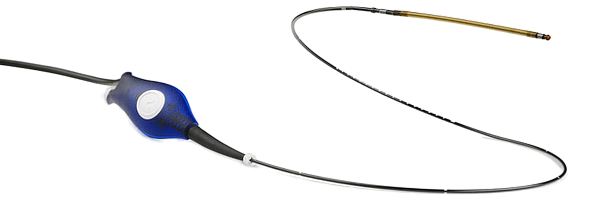
Radiofrequency Catheter Ablation
Radiofrequency catheter ablation is a minimally invasive treatment used to close diseased veins and restore healthy blood flow for patients with chronic venous insufficiency (CVI). During the procedure, a small incision is made—typically near the ankle or lower leg—to allow insertion of a thin catheter into the affected vein.
Guided by ultrasound, the catheter delivers controlled radiofrequency energy to the vein wall. The heat causes the vein to collapse and seal shut. Once closed, blood is naturally redirected to nearby healthy veins. This improves circulation, reduces symptoms like swelling and fatigue, and helps prevent further complications. Most patients experience minimal discomfort and a quick return to normal activities.
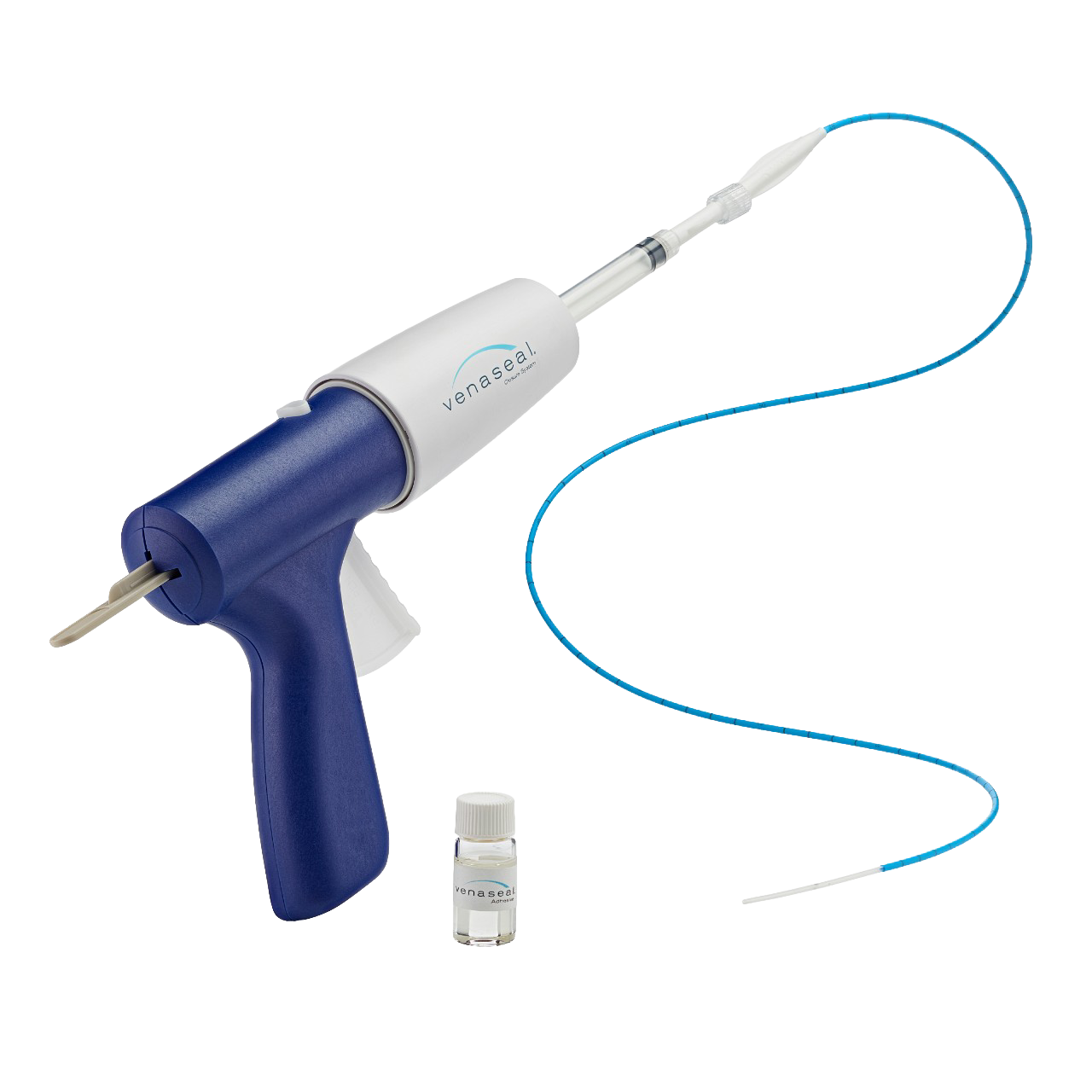
Venaseal™ Closure System
The VenaSeal™ procedure is a minimally invasive treatment designed to close superficial varicose veins without the need for heat, lasers, or chemical injections. Using ultrasound guidance, a trained vein specialist inserts a small catheter into the diseased vein and delivers a medical adhesive—VenaSeal™—which seals the vein shut. Once closed, blood is naturally rerouted to nearby healthy veins.
This approach eliminates the need for vein stripping, radiofrequency energy, or sclerotherapy. Most patients experience less bruising and a quicker recovery, with minimal risk of nerve damage. Some mild side effects, such as tingling or vein inflammation (phlebitis), may occur—similar to other vein treatments.
VenaSeal™ has been FDA-approved and shown to be both safe and effective for treating superficial varicose veins in the legs.
Venaseal™ Closure System
The VenaSeal™ procedure is a minimally invasive treatment designed to close superficial varicose veins without the need for heat, lasers, or chemical injections. Using ultrasound guidance, a trained vein specialist inserts a small catheter into the diseased vein and delivers a medical adhesive—VenaSeal™—which seals the vein shut. Once closed, blood is naturally rerouted to nearby healthy veins.
This approach eliminates the need for vein stripping, radiofrequency energy, or sclerotherapy. Most patients experience less bruising and a quicker recovery, with minimal risk of nerve damage. Some mild side effects, such as tingling or vein inflammation (phlebitis), may occur—similar to other vein treatments.
VenaSeal™ has been FDA-approved and shown to be both safe and effective for treating superficial varicose veins in the legs.
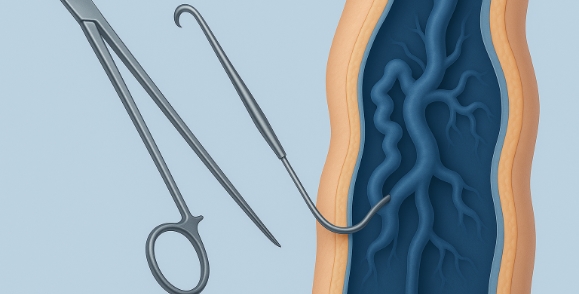
Ambulatory Phlebectomy
Ambulatory phlebectomy is a minimally invasive procedure performed in-office to remove bulging or surface varicose veins that are not ideal candidates for ablation or sclerotherapy. This technique is often used when veins are too large for injection treatments or located in areas that cannot be treated with a catheter.
During the procedure, the area is numbed with local anesthesia, and tiny incisions are made near the vein. A specialized hook is used to gently extract the diseased vein. Once removed, the incisions are closed with small dressings—no stitches required. Recovery is quick, and scarring is minimal.
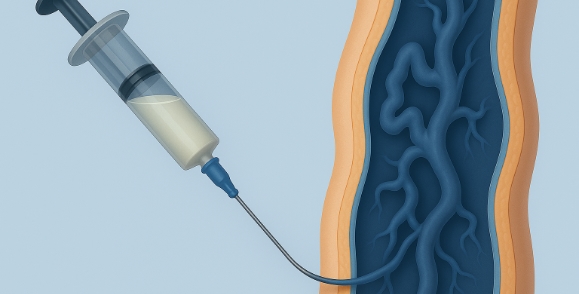
Sclerotherapy
Sclerotherapy is a widely used treatment for spider veins and smaller varicose veins. A sclerosing solution is injected directly into the vein, irritating the lining and causing it to collapse and seal shut. Over time, the body naturally absorbs the treated vein, and blood flow is redirected to healthier vessels.
This treatment is fast, effective, and performed in-office without anesthesia. Depending on the severity and number of veins, patients may need multiple sessions—typically ranging from one to six treatments, with most needing three to four.
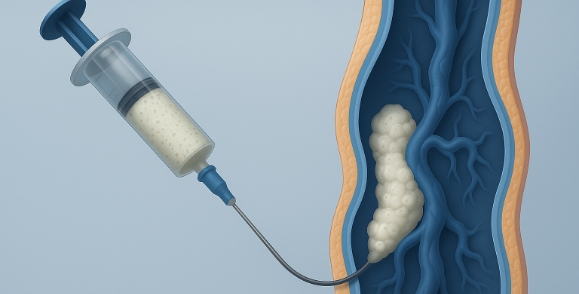
Polidocanol Foam Ablation
Polidocanol Foam Ablation uses a specialized foam solution to treat varicose veins that may be tortuous or hard to access with a catheter. The foam is injected directly into the affected vein, irritating the lining and causing it to collapse. Over time, the body absorbs the vein, and symptoms like heaviness, swelling, and aching are reduced. This technique is especially useful for veins that are not suitable for other treatments.
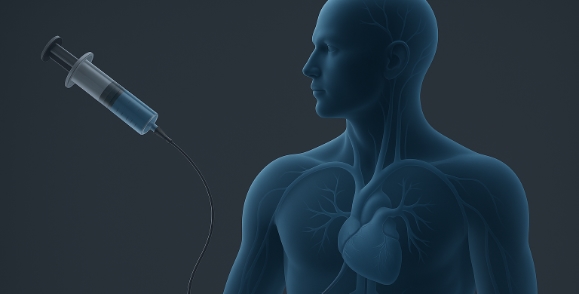
Venous Angiogram
A venous angiogram is a diagnostic imaging procedure used to evaluate the structure and function of your veins. A contrast dye is injected into the veins, and X-ray imaging is used to identify blockages, narrowed areas, or other abnormalities. This test is often performed prior to treatment to map out vein flow and guide clinical decision-making.
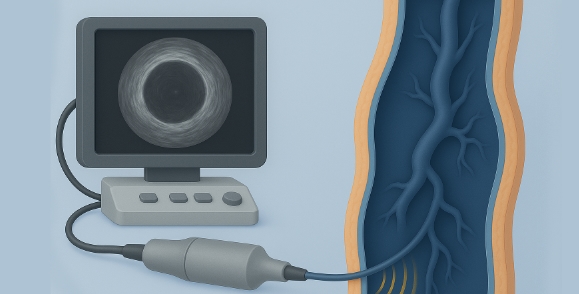
Intravascular Ultrasound
Intravascular Ultrasound (IVUS) provides real-time imaging from inside the vein using a tiny ultrasound probe. This advanced diagnostic tool gives detailed views of the vein wall and lumen, helping physicians identify areas of narrowing or damage. IVUS is often used to guide treatment during complex cases of venous obstruction or post-thrombotic syndrome.
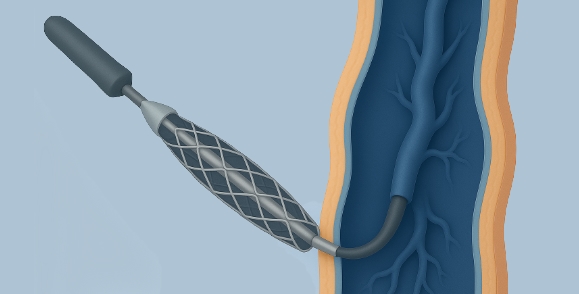
Stent Placement
In patients with narrowed or obstructed veins, a small mesh tube called a stent can be placed to keep the vein open and restore normal blood flow. The stent is delivered via catheter and expanded at the site of the blockage. Once in place, it provides long-term support to the vein wall and can significantly improve symptoms like leg pain, swelling, or fatigue caused by poor circulation.
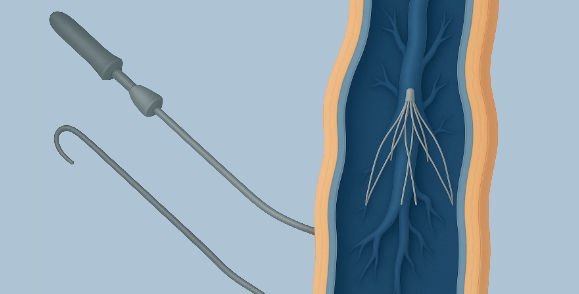
Placement & Removal of Inferior Vena Cava (IVC) Filter
This minimally invasive procedure is used to insert or remove a filter in the inferior vena cava—the large vein that carries blood from the legs to the heart. The filter is designed to catch blood clots and prevent them from reaching the lungs, reducing the risk of pulmonary embolism in high-risk patients. Placement and removal are typically done via catheter with little to no recovery time.
